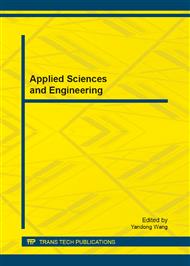p.558
p.564
p.571
p.577
p.585
p.590
p.596
p.604
p.610
Multiaxial Fatigue Life Prediction for Notched Components under Proportional and Non-Proportional Cyclic Loading
Abstract:
Fatigue life estimation of notched components is mostly dependent on notch stress and strain calculation with non-linear finite element analysis (FEA). For multiaxial cyclic loading, the stress-strain analysis of notch root is rather complex and the non-linear FEA is also very time-consuming. In this paper, a new fatigue life prediction method for notched components under multiaxial loading is proposed. First, a linear elastic solution needs to be solved for notched components under multiaxial cyclic loading. Then, an elastic equivalent parameter is computed using the linear elastic solution. On the basis of the elastic equivalent parameter combined with the Neuber’s rule, an elastic-plastic equivalent parameter is obtained. Finally, the elastic-plastic equivalent parameter is used to estimate fatigue crack initiation life of notched components. The proposed method needs only elastically calculated notch strain history as the basic input and is convenient for engineering application. The method is verified with experimental data of SAE 1045 notched shaft specimens under proportional and non-proportional loading. The results showed that the method can provide good life estimates.
Info:
Periodical:
Pages:
585-589
Citation:
Online since:
September 2012
Authors:
Price:
Сopyright:
© 2012 Trans Tech Publications Ltd. All Rights Reserved
Share:
Citation:


